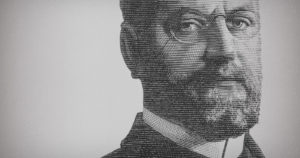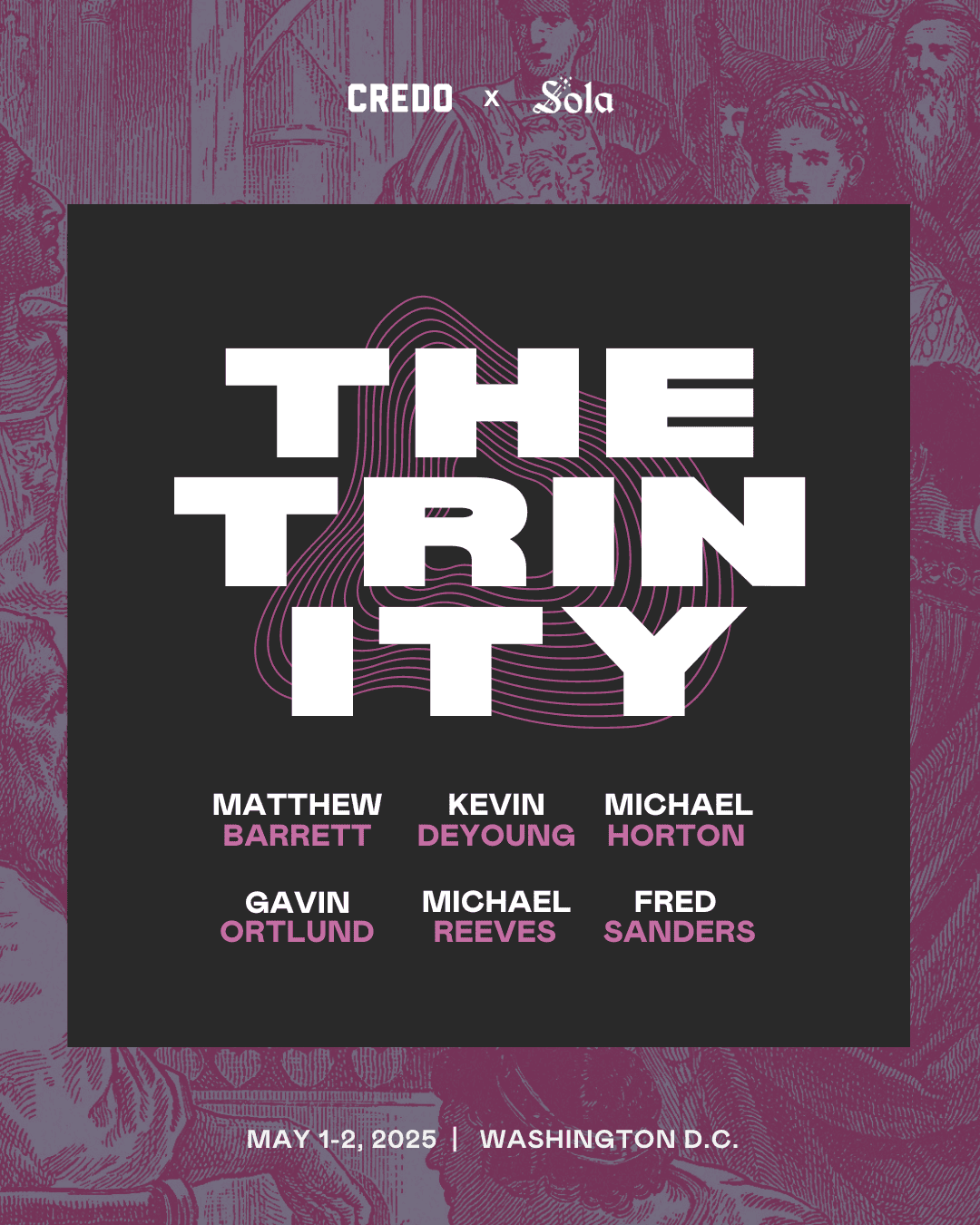
Author’s Corner: Catholic University of America
Each week on Credo we welcome you to join us in the Author’s Corner where we will meet a set of authors whose recent books deserve your attention and might even help you grow in your knowledge of theology, history, philosophy, and the scriptures. We hope the Author’s Corner can keep you up-to-date on the most important books published today and where you can find them.
On today’s Author’s Corner, we present you with a selection of titles from the Catholic University of America Press.
T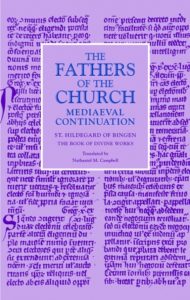 he Book of Divine Works (CUA, 2021) by St. Hildegard of Bingen, translated by Nathaniel M. Campbell.
he Book of Divine Works (CUA, 2021) by St. Hildegard of Bingen, translated by Nathaniel M. Campbell.
Declared a Doctor of the Church in 2012, St. Hildegard of Bingen (1098-1179) is one of the most remarkable figures of medieval Latin Christianity. A visionary theologian and prophetic reformer, as well as composer, artist, and natural scientist, her voice echoes across the centuries to offer today an integrated vision of the relationship between cosmos and humanity.
Completed in 1173, The Book of Divine Works (Liber Divinorum Operum) is the culmination of the Visionary Doctor’s theological project, offered here for the first time in a complete and scholarly English translation. The first part explores the intricate physical and spiritual relationships between the cosmos and the human person, with the famous image of the universal Man standing astride the cosmic spheres. The second part examines the rewards for virtue and the punishments for vice, mapped onto a geography of purgatory, hellmouth, and the road to the heavenly city. At the end of each Hildegard writes extensive commentaries on the Prologue to John’s Gospel (Part 1) and the first chapter of Genesis (Part 2)—the only premodern woman to have done so. Finally, the third part tells the history of salvation, imagined as the City of God standing next to the mountain of God’s foreknowledge, with Divine Love reigning over all.
For Hildegard, the Incarnation is the key moment of all history, willed from eternity to complete God’s Work. God’s creative capacity and loving mission are thus shared with the humans he made in his image and likeness—for Hildegard, the incarnate Christ’s tunic and the Word’s creative rationality, respectively. Containing all creation within ourselves, we are divinely called to cooperate in the Creator’s work, to enter into a fruitful and sustainable relationship with creation. The scope of Hildegard’s visionary theology is both cosmic and close—reflections of God’s loving self-revelation are both grand and utterly intimate, as the Work of God reaches from the very heart of infinity down into every smallest detail of the created world.
G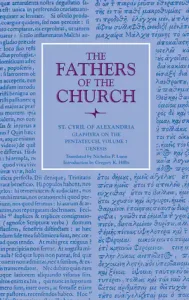 laphyra on the Pentateuch, Volume 1: Genesis (CUA, 2019) by Cyril of Alexandria
laphyra on the Pentateuch, Volume 1: Genesis (CUA, 2019) by Cyril of Alexandria
Cyril of Alexandria (ca. 376–444) is best known for his defense of orthodoxy at the time of the Nestorian controversy over the nature of Christ. However, by far the larger part of Cyril’s literary output consisted of commentaries on books of both Old and New Testaments, written before the Christological debate was sparked off in 428. One of these works, of major proportions, was the so-called Glaphyra (“elegant comments”) on the Pentateuch. This comprises a total of thirteen separate “books,” or volumes: seven on Genesis, three on Exodus, and one each on Leviticus, Numbers and Deuteronomy. The comments primarily concern the narrative portions of the Pentateuch, hence the greater space given to Genesis, though a number of the legal prescriptions are also treated. This present volume, containing all seven books on Genesis, is the first of a projected two-volume set which will offer a translation of the whole Glaphyra for the first time in English. Cyril’s aims within the commentary are both theological and pastoral. His chosen method begins with a consideration of the historia. Here the Alexandrian patriarch deals with the text at the literal level. At this stage he explains any historical, cultural, and at times even linguistic and textual issues presented within the passage, which is then followed by some theological instruction or lessons of a more practical nature based upon the literal interpretation. The exposition then moves on to the theoria. This is Cyril’s preferred term for the contemplation of the spiritual sense, that is to say, the mystery of Christ which he firmly held lay hidden beneath the surface of the Old Testament text. With great adeptness and consistency Cyril identifies elements within the ancient narratives as figures, or “types and shadows,” of the Lord Jesus Christ, the Church, and the teachings of the gospel.
A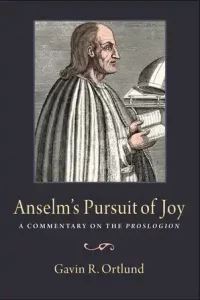 nselm’s Pursuit of Joy: A Commentary on the Proslogion (CUA, 2020) by Gavin R. Ortlund
nselm’s Pursuit of Joy: A Commentary on the Proslogion (CUA, 2020) by Gavin R. Ortlund
The interpretation of Anselm of Canterbury’s Proslogion has a long and rich tradition. However, its study is often narrowly focused on its so-called “ontological argument.” As a result, engagement with the text of this work tends to be lopsided, and the prayerful purpose that undergirds the whole book is often completely ignored. Even the most rigorous engagements with the Proslogion often have little to say, for instance, about how the prayers of Proslogion 1, 14, and 18 contribute materially to Anselm’s argument, or how his doctrine of God develops organically from the divine formula in the early chapters to the doctrines of eternity, simplicity, and Trinity in later chapters. There are very few works that offer a sustained analysis to Anselm’s flow of thought throughout the entire Proslogion, and no one has explored how Anselm’s doctrine of creaturely joy in heaven in Proslogion 24-26 is a fitting climax and resolution to the book.
Anselm’s Pursuit of Joy attempts a sustained, chapter-by-chapter textual analysis of the Proslogion, and offers the first effort to situate Anselm’s doctrine of heaven in Proslogion 24-26 as the climax of the earlier themes of Anselm’s work. Gavin Ortlund suggests that the basic purpose of Anselm’s argument in the Proslogion is to seek the visio Dei that he articulates as his soul’s deepest desire ( Proslogion 1). While Anselm’s argument for God’s existence ( Proslogion 2-4) is an important piece of this effort, it is only one step of a larger trajectory of thought that leads Anselm to meditate further on God’s nature as the highest good of the human soul ( Proslogion 5-23), and then to anticipate the joy of possessing God in heaven ( Proslogion 24-26). In other words, the establishment of God’s existence is only the penultimate consequence of Anselm’s famous formula “that than which nothing greater can be thought”—his ultimate concern is with the infinite creaturely joy that is entailed by his existence. The Proslogion is, far more than an argument for God’s existence, a meditation on God as the chief happiness of the human soul.
